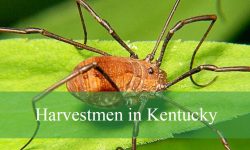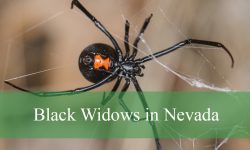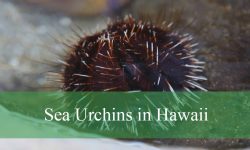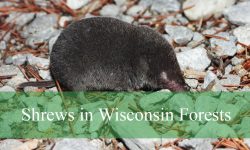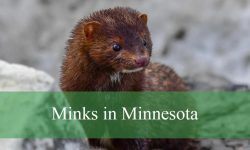As dawn breaks over a Florida neighborhood, the air fills with a symphony that no other bird can match. A single gray figure perches atop a palm tree, chest lifted, tail twitching, and unleashes a cascade of notes — whistles, trills, and borrowed songs from cardinals, frogs, even car alarms. This is the mockingbird, the state bird of Florida, and one of the most extraordinary songsters in the natural world.
While nearly every Floridian recognizes its bold voice, few truly know its secrets. The mockingbirds in Florida are not just noisy backyard visitors — they are complex, intelligent creatures whose songs tell stories of territory, survival, and identity. Behind their melodic imitations lies a life of fierce devotion, adaptability, and subtle beauty that often goes unnoticed.
In this comprehensive exploration, we’ll uncover the hidden truths about Florida’s mockingbirds — their songs, intelligence, nesting behavior, and vital role in the state’s ecosystems. What you learn might change how you listen to the Florida morning forever.
Meet Florida’s Mockingbird
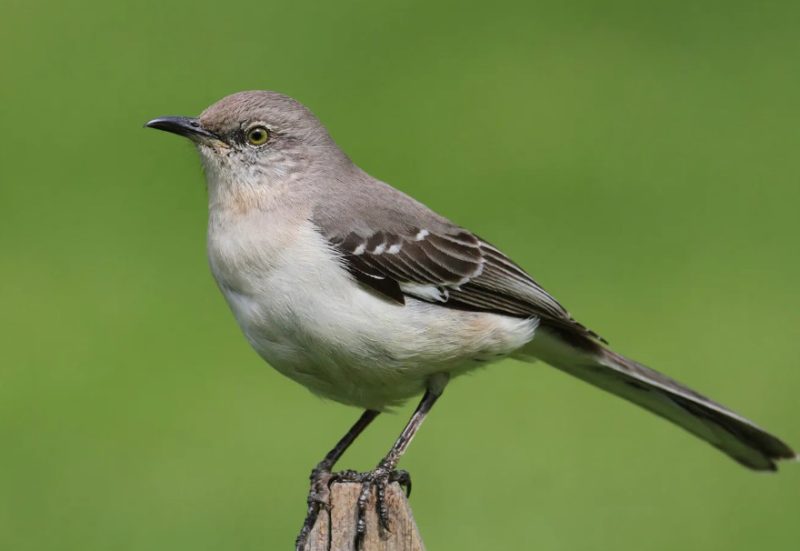
The State Bird of Florida
The Northern Mockingbird (Mimus polyglottos) was officially named Florida’s state bird in 1927 — a title it shares with four other southern states. Known for its unmatched vocal range and fearless personality, it perfectly represents Florida’s lively spirit and resilience.
These medium-sized gray birds, about 10 inches long, are easily recognized by their sleek plumage, white wing patches, and long tail feathers that flash dramatically in flight. They thrive in open habitats — from beaches and citrus groves to suburban yards and urban parks.
Unlike many migratory songbirds, mockingbirds in Florida are permanent residents, living and singing year-round in the Sunshine State. Their presence is as much a part of Florida’s landscape as palm trees and ocean breezes.
Adapted to Every Landscape
From the coral islands of the Keys to the pine scrublands of central Florida and the coastal dunes of the Panhandle, mockingbirds have adapted to nearly every environment.
They build nests in shrubs, hedges, or low trees, often close to human homes, taking advantage of gardens rich in fruiting plants and insects. Their adaptability makes them one of the most widespread bird species in Florida — thriving in both wild and urban landscapes.
This ability to flourish amid change is one reason mockingbirds in Florida have become such enduring symbols of the state’s natural harmony and persistence.
Anatomy and Intelligence
A Voice Like No Other
The mockingbird’s song is its most famous trait — a complex sequence of repeated phrases and imitations. A single bird can mimic up to 200 distinct sounds, including the songs of other birds, frogs, insects, and even mechanical noises like sirens or phone ringtones.
Males sing to claim territory and attract mates, often perching on high points such as light poles or treetops. The more extensive their repertoire, the more impressive they appear to potential partners.
Their vocal mimicry isn’t mere imitation — it’s art. Each sound is practiced and perfected, woven into rhythmic sequences that change with the season. In spring, songs are exuberant and frequent; in summer, more measured and territorial.
In short, mockingbirds in Florida don’t just copy — they compose.
Brains Behind the Beauty
Scientists have discovered that mockingbirds possess advanced memory and auditory processing abilities, allowing them to recognize complex sound patterns. They can differentiate between similar tunes, recall them for years, and even adapt to new environments by incorporating local sounds into their repertoire.
Their intelligence extends beyond singing. Mockingbirds have been observed recognizing individual humans, especially those who’ve disturbed their nests. In one University of Florida study, birds repeatedly swooped at the same person days after an encounter — proof of remarkable facial recognition in a wild species.
This combination of cognition, learning, and adaptation makes Florida’s mockingbirds some of the most intelligent songbirds in North America.
Behavior and Daily Life
Territorial and Fearless
Despite their graceful songs, mockingbirds in Florida are fiercely territorial. They will defend their nesting area against intruders many times their size — from cats and crows to hawks and humans.
During breeding season, pairs often patrol their territory together, diving at threats with sharp alarm calls and aerial displays. Yet outside nesting season, they coexist peacefully, gathering in small groups to feed on berries and insects.
Their boldness and loyalty to territory symbolize persistence — a trait admired in Florida’s cultural and natural identity.
The Life of a Songbird
Mockingbirds are diurnal, active from sunrise to sunset. Males sing most vigorously in early morning and late evening, when sound carries farthest through still air.
During the hottest parts of the day, they rest in shaded branches, conserving energy. At night, some males — especially unattached ones — continue singing under moonlight, serenading the dark in haunting melodies that drift across quiet Florida neighborhoods.
Every note serves a purpose: to defend space, court mates, or simply express vitality in a world full of sound.
Nesting and Family Life
Building the Nest
The nesting season for mockingbirds in Florida typically runs from February through August, often coinciding with the abundance of insects and fruits.
Males begin the process by selecting potential nest sites and building partial structures in bushes or trees. Females inspect these beginnings, choosing one to complete — adding grasses, roots, and leaves to shape a soft, cup-like nest.
Preferred nesting locations include:
-
Dense shrubs (like hibiscus or bougainvillea)
-
Ornamental trees
-
Palm crowns or hedges near open lawns
Once finished, the nest stands as a small fortress hidden in foliage, elevated but accessible for quick defense.
Raising the Young
A typical clutch contains 3–5 bluish eggs with brown speckles. The female incubates them for about two weeks while the male guards the area and provides food.
After hatching, both parents feed the chicks a high-protein diet of insects, ensuring rapid growth. Within 12 days, the fledglings leave the nest but remain under parental care for another two weeks.
Mockingbirds are devoted parents — tirelessly feeding, teaching, and protecting their young. Even after the brood flies off, parents often raise another clutch within weeks.
Their family bonds reveal an emotional intelligence that adds depth to their songs.
Diet and Feeding Habits
A Balanced Menu
The mockingbirds in Florida are omnivores, thriving on a diverse diet that changes with the seasons.
Insects such as beetles, grasshoppers, caterpillars, and ants make up much of their summer diet, providing protein during breeding months. In fall and winter, they switch to fruits and berries — especially those of native plants like beautyberry, holly, mulberry, and wild grape.
They often feed on the ground, hopping gracefully across lawns or sidewalks, pausing to snatch food with sharp precision. Their adaptability to both wild and human-altered environments ensures survival year-round.
Helping the Ecosystem
By consuming insects, mockingbirds naturally reduce pest populations, making them invaluable to gardens and farms. Their fondness for native berries also makes them vital seed dispersers, aiding plant reproduction and forest regeneration.
Each mockingbird plays a subtle but essential role in Florida’s ecological web — one note in nature’s greater symphony of balance.
Songs and Symbolism
The Language of Music
Mockingbirds don’t just sing — they communicate. Their songs convey emotion and information, signaling aggression, courtship, or celebration.
In Florida, where mornings begin with birdsong from every tree, the mockingbird’s voice stands apart — strong, confident, and endlessly varied. It mimics not just other birds but also the rhythms of the environment: the buzz of cicadas, the croak of frogs, the hum of traffic.
Their ability to blend human and natural sounds has earned mockingbirds in Florida a reputation as mediators between the wild and the civilized.
A Symbol of the South
Throughout American history, mockingbirds have represented innocence, creativity, and the harmony of nature. Harper Lee immortalized them in her novel To Kill a Mockingbird, where they symbolize goodness and purity — creatures that do nothing but sing.
In Florida, they hold similar meaning: a voice of persistence amid change, beauty amid chaos. Their presence in cities and swamps alike reminds people that nature endures — adaptable, resilient, and expressive.
The mockingbird’s song, much like Florida itself, is both wild and familiar, blending countless influences into something unmistakably its own.
Mockingbirds and Florida’s Ecosystem
Guardians of the Garden
As insect hunters and seed spreaders, mockingbirds in Florida maintain natural balance across diverse habitats. They help control crop pests and promote the growth of native plants by distributing seeds.
In urban environments, they often become unofficial guardians of green spaces, thriving in gardens and city parks where few wild birds dare to nest.
Their success demonstrates how wildlife can adapt — even flourish — alongside human development when given space and respect.
Coexistence With Humans
Mockingbirds have a special relationship with Floridians. They are common backyard companions — perched on fences, singing from TV antennas, or following gardeners in search of stirred-up insects.
However, their fearlessness can lead to amusing confrontations. During nesting season, they may dive at pets or people who wander too close to their nests. While startling, these displays are brief and harmless — just part of their fierce parental instinct.
Ultimately, their presence enriches daily life, bringing wild music to even the most urban corners of Florida.
Myths and Misunderstandings
Myth 1: Mockingbirds Never Sleep
False. They are diurnal birds but may sing at night under bright moonlight, especially unmated males.
Myth 2: They Only Mimic Other Birds
False. Mockingbirds in Florida imitate frogs, insects, and even mechanical sounds like alarms or ringtones.
Myth 3: They Are Aggressive Birds
Partly true. They defend nests fiercely but are otherwise peaceful and sociable.
Myth 4: All Mockingbirds Sound the Same
False. Each bird has a unique repertoire shaped by its local environment — no two sound alike.
Myth 5: Mockingbirds Leave Florida in Winter
False. They are year-round residents, staying active and vocal through all seasons.
Understanding these truths helps people appreciate the mockingbird for what it truly is — a marvel of adaptation and song, not a nuisance or mystery.
Conservation and Challenges
Protecting Urban Wildlife
Though abundant, mockingbirds in Florida face threats from habitat loss, pesticides, and window collisions. Urban development reduces nesting areas and food sources, while outdoor cats remain a leading cause of bird mortality.
Simple steps can help protect them:
-
Plant native berry-producing shrubs.
-
Avoid pesticide use.
-
Keep cats indoors.
-
Provide shallow birdbaths for water.
Even small backyard actions contribute to the survival of this iconic species.
Climate Change and Resilience
Rising temperatures and shifting rainfall patterns may alter insect and fruit availability — key food sources for mockingbirds. Fortunately, their adaptability gives them a better chance than most species to endure environmental change.
Their flexibility, intelligence, and wide diet make mockingbirds in Florida symbols of resilience — creatures that find harmony even in uncertainty.
Surprising and Little-Known Facts About Mockingbirds in Florida
-
Mockingbirds can sing over 200 different songs in their lifetime.
-
They mimic not just other birds but also barking dogs, frogs, and electronic sounds.
-
Both males and females sing, though males have larger repertoires.
-
Some mockingbirds sing through the night under full moons.
-
They recognize human faces and remember threats for years.
-
They can raise up to four broods of chicks per year in Florida’s warm climate.
-
Their state bird status comes from their courage and cheerful nature.
-
Mockingbirds prefer native fruit trees over exotic species for nesting areas.
-
They can live up to 8 years in the wild.
-
Their Latin name, Mimus polyglottos, means “many-tongued mimic.”
FAQs About Mockingbirds in Florida
Are mockingbirds native to Florida?
Yes. Mockingbirds in Florida are native residents found across the entire state.
Why do mockingbirds sing so much?
They sing to defend territory, attract mates, and display vitality.
Do female mockingbirds sing too?
Yes, especially during courtship and nesting season.
What do mockingbirds eat?
They eat insects, berries, and fruits — a balanced omnivorous diet.
Are mockingbirds aggressive toward humans?
Only when protecting their nests. Their dives are defensive, not harmful.
Do mockingbirds migrate?
No. They are permanent residents of Florida’s warm climate.
Can mockingbirds imitate human voices?
Not distinctly, but they can mimic whistles, ringtones, and short human-made sounds.
How can I attract mockingbirds to my yard?
Plant native fruiting shrubs, offer water, and keep a safe, open environment.
Are mockingbirds protected by law?
Yes. They are protected under the Migratory Bird Treaty Act — harming them or their nests is illegal.
Do mockingbirds mate for life?
They form seasonal pairs and may reunite in future breeding seasons.
Final Thoughts
The mockingbirds of Florida are more than the soundtrack of dawn — they are storytellers of adaptation, intelligence, and resilience. Through their voices, the state’s wild and urban worlds merge in a symphony of life.
They remind us that beauty often hides in plain sight — in the courage of a small bird singing louder than the world around it.
The truth about mockingbirds in Florida is simple yet profound: they are not just imitators of sound, but creators of connection — between species, between people, and between the land and its living music.

